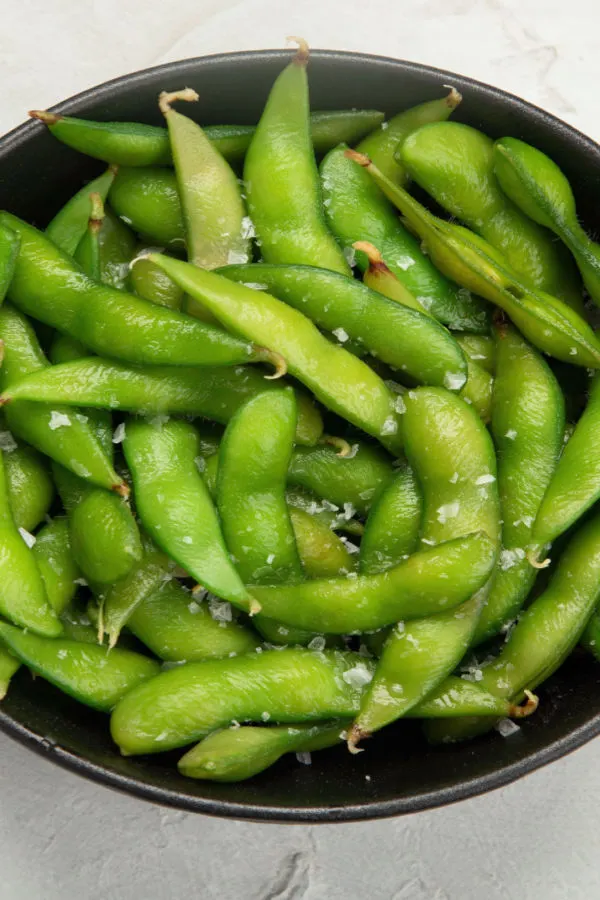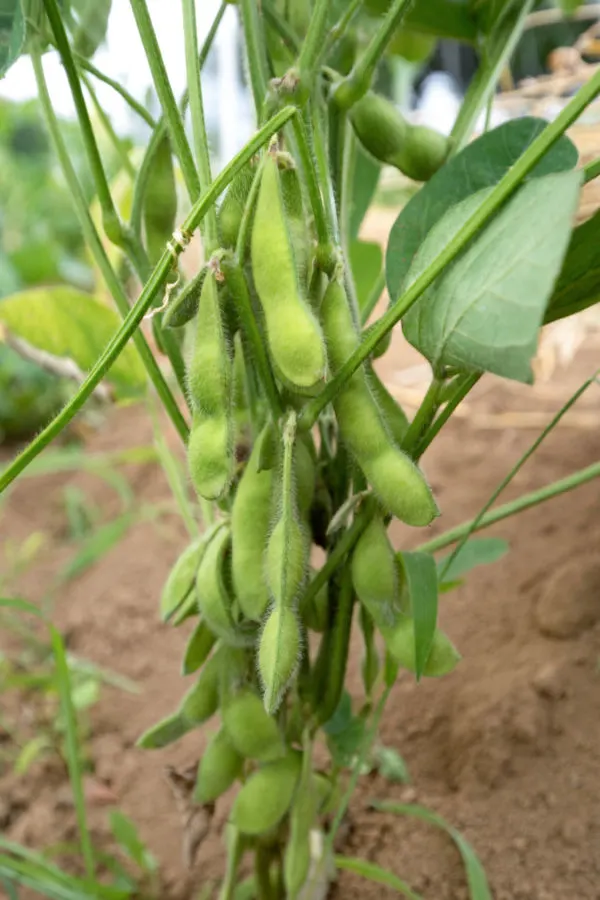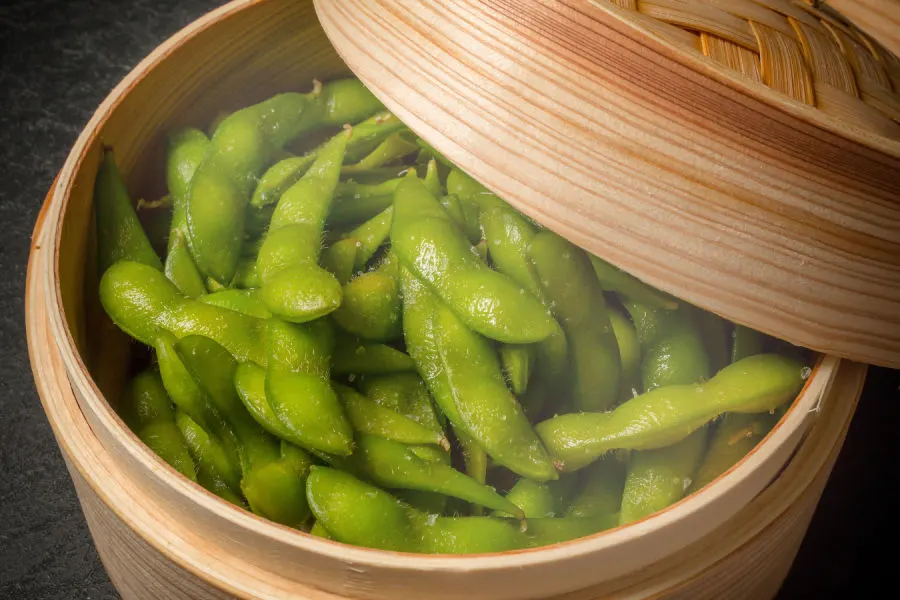Did you know that you can plant and grow your own Edamame and enjoy the delicious and nutritious snack like never before – and even better, growing it will actually help leave the soil where it is planted to become even more fertile than it was before!
Edamame is gaining in popularity with each passing year. Made from the young, tender soy beans that grow inside of a fuzzy pod, edamame is used in stir-fries, as a base for hummus, and most notably as a wonderful little treat to eat from the pods when steamed and lightly salted.
Not only are they tasty, they are full of goodness. Edamame is brimming with protein, fiber and antioxidants. It also contains a fair amount of calcium, magnesium, potassium, iron and other essential minerals. Talk about a quick, easy-to-make power-packed snack!

Edamame has certainly become a go-to appetizer in the restaurant world. What started out as an item on many Asian restaurant menus has spread to starter courses everywhere as it continues to grow in popularity.
In fact, it has grown so much that it has peaked the interest of gardeners everywhere wondering if they can grow the vegetable in their backyard garden. The good news? It couldn’t be easier!
How To Grow Edamame – Growing Edamame
Growing edamame is very similar to growing beans in your garden. As a soybean, edamame is a legume. As with all legumes, edamame actually helps to fix the available nitrogen in the soil. Because of this, it improves a soil’s fertility for the next crop to grow in the space.
When growing at home, you should always plant edamame from seed. It simply does not perform well as a transplant crop. Seeds should go directly into the soil as soon as the threat of a late spring frost has passed, and once the soil warms to at least 55°(F). This will help speed germination, and help keep the seed from rotting out.
For best results, always select a good quality seed that is fresh. The older the seed, the less likely it is to germinate. In addition, older seeds can often struggle to grow to full maturity and with production.
As it grows in popularity, Edamame seed is showing up more and more at local farm stores on their seed rack displays. You can also find it available at most on-line seed stores as well. Affiliate Seed Link: Edamame Bean Seeds (Eden Brothers)
Planting Edamame
To prepare for planting, dig a furrow (small trench) in the soil about one inch deep and a few inches wide. Fill the trench up about three-quarters full of compost. Next plant your seeds every few inches. As you plant, set the seed down into the layer of compost so that it is about 1/2 inch from the soil’s surface.

The compost will not only help feed edamame as it grows, it also helps keep moisture at an even level around the seed as it sprouts and matures. Beyond adding compost at planting time, no additional nutrients or fertilizers are needed to grow edamame. It’s just one more reason they are so simple and easy to grow!
Thinning & Maintaining Your Crop – Growing Edamame
Edamame, depending on the soil temperature and variety, will usually sprout in ten to fourteen days. Once plants grow to a few inches in height, thin your seedlings so that your plants are spaced every four to six inches.
Mulching your crop with three to four inches of straw (shredded leaves work well for this too) will help to keep moisture in and competing weeds out. Weeds can severely impact a harvest. Not only do they steal nutrients from the plant, they more importantly steal moisture.
Edamame requires a fair amount of water to fill out the beans within their pods. For best results, as with most vegetables, your edamame plants should be receiving about one inch of water per week, either through rainfall or by watering.
Plants that do not receive enough water will not only have lower yields but their bean pods will be far less plump and juicy. When watering, water slow and easy to allow the moisture down into the soil. See: 5 Simple Secrets To Watering Vegetable Plants Right!

As for support, Edamame grows in a bushier plant style as opposed to vining beans. They do not require staking or a trellis to stay upright, but will perform much better if not overcrowded. Most varieties will reach a height of around two feet at maturity.
Edamame can grow equally well in raised beds and containers. If growing in containers, you may way to insert a center stake to keep the plant from tumbling over. This also makes harvesting a much easier task!
Harvesting Fresh – Growing Edamame
The key to harvesting edamame for fresh eating or making hummus is to pick the bean pods from the plant at the peak of the pods juiciness. Edamame does need to be boiled or steamed before eating. All soybeans must be cooked before consumption to remove toxins considered poisonous.
By simply boiling or steaming the pods for five to ten minutes and sprinkling on salt or seasoning to taste, they are ready to eat!
For edamame, look for pods that are plump and green and that are two to three inches in length. The pods can tear quite easily when harvesting, so cutting or pinching them off the plant may be the easiest method of all.

Once picked, edamame can store refrigerated for about seven to ten days. To keep the pods at their freshest, store in a sealed bad or container. Pods can be frozen but should be blanched first prior to freezing. Frozen edamame will usually stay good for up to six months.
Drying Edamame / Saving Seed
If plants have begun to turn to a pale green or light yellow, they are past the stage for fresh eating. The good news is that you can still dry them to enjoy in soups and dishes. Allow the pods to completely dry out first and then remove from the shell.
Store dried beans in a tight, sealed container out of direct lighting. You can save edamame seeds quite easily for replanting the following season. Once dry, if saving for seeds, store in a well ventilated area that stays cooler but never freezes.
If you are storing seeds for replanting, never keep for more than one growing season. Edamame seeds lose their vitality and ability to sprout as they age, so planting fresh seed is a must!
Here is to growing your own edamame this year and enjoying one of the healthiest snacks around!
Follow Our Facebook Page For Great Gardening Tips And Advice! This Is My Garden Facebook Page
This Is My Garden is a garden website created by gardeners, for gardeners. Jim and Mary Competti have been writing gardening, DIY and recipe articles and books and speaking for over 15 years from their 46 acre Ohio farm. They publish three articles every week, 52 weeks a year. Sign up today to follow via email, or follow along!
